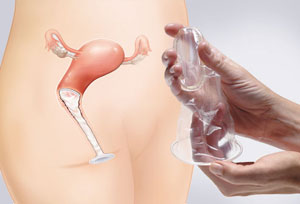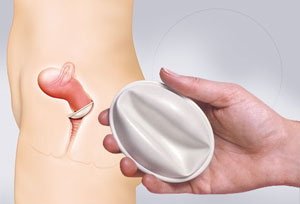WITH a growing number of methods available on the Guyanese market, and with so many factors to consider, choosing a form of birth control can be daunting.
You may be able to decide on a method by looking at this guide excerpted from WebMD (web.md.com), which has several articles on the subject. We’ve made it easier for  you with this handy guide. There are more options available, such as an under-the-skin implant (a horrifying, expensive tubal implant which I excluded). The birth control methods featured are the most common.
you with this handy guide. There are more options available, such as an under-the-skin implant (a horrifying, expensive tubal implant which I excluded). The birth control methods featured are the most common.
Firstly, one of your considerations might be to determine whether you want to conceive any (or more) children. This is a decision that will affect the rest of your life, and can be made only after thinking it through carefully.
If you are not sure about the future, even though you know how you feel now, a temporary birth control method is a better choice. If you are young, have few or no children, are choosing sterilization because your partner wants it, or think it will solve money or relationship problems, you may regret your decision later.
Secondly, if an unplanned pregnancy would seriously impact your plans for the future, choose a birth control method that is highly effective. Or if you have a stable relationship and income, and plan to have children in the future anyway, you may feel comfortable using a less reliable method.
Thirdly, consider how effective the different types of birth control are. Consider how important it is to you to avoid pregnancy, and then look at how well each birth control method works. Hormonal methods and IUDs work very well. Barrier methods such as condoms, diaphragms, and spermicidals are only moderately effective. Fertility awareness is even less effective.
Fourthly, unless you know that your partner has no other sex partners and is free of sexually transmitted diseases (STDs), you are at risk for STD infection. If you are at risk, protect yourself from infection every time you have sex. Use a condom in addition to any other birth control method you choose.
If you know that you will not ever want to conceive a pregnancy, tubal ligation or tubal implants for you, or a vasectomy for your partner, is a reasonable option to consider.
Finally, be aware of how much effort you are willing to put into birth control. For example, you need to take birth control pills every day. Barrier methods have to be used before sex. Fertility awareness requires that you watch your temperature and other signs closely, and avoid sex on days when you could get pregnant. If you are not willing to put in the effort, choose another method of birth control.
If you are not comfortable with, or might not consistently use a birth control method for any reason, that method is not likely to be reliable for you in the long run. Asking yourself these questions can help you decide which birth control method is right for you.
Heath factors limiting choice of birth control
If you have health problems or other risk factors, some birth control methods may not be right for you.
– Smoking: If you smoke more than 15 cigarettes a day, and are 35 or older, or have high blood pressure, a history of stroke, a history of blood clots, liver disease, or heart disease, you may not be able to use combined hormonal methods.
– Migraines: If you have migraine headaches, talk to your health professional about whether you can try combined hormonal contraception.
– Diabetes: If you have advanced or long-standing diabetes, discuss the risks of taking hormonal birth control methods with your health professional.
– Breast-feeding: If you are breast-feeding, the estrogen in combined hormonal birth control can lower your milk supply. Progestin-only pills, an implant, both kinds of IUDs, or birth control shots do not affect your milk supply, and are a good option for breast-feeding women.
Other health problems that might keep you from using a particular birth control method are relatively rare, especially in young women. Compare the recommendations for and against certain hormonal birth control methods, but, before using any method, talk with your health professional to see if it is safe for you.
After you have looked at the facts about the different methods, and have thought about your own values and needs, you can choose the method that will work best for you. Using condoms with any method may increase its reliability and help to protect you from sexually transmitted diseases (STDs).
Fertility awareness
Fertility awareness means avoiding sex when the woman is most fertile. The most reliable way to do this is to watch for changes in cervical mucus and body temperature. The good thing about this method is that no drugs or devices are used, and it is relatively inexpensive. However, it limits spontaneous sex, and besides, 25% of typical users get pregnant.
Spermicides
Spermicides contain chemicals that kill sperm. They come in the form of foam, jelly, cream, or film that is placed inside the vagina before sex. Spermicides are most often used along with other birth control methods. The good thing about this method of birth control is that it is easy to use; but it may increase the risk of contracting an STD.  Moreover, 29% of its users eventually get pregnant.
Moreover, 29% of its users eventually get pregnant.
Male Condom
The latex condom is the classic barrier method. It prevents sperm from entering the woman’s body, protecting against pregnancy and STDs. Of couples who rely only on male condoms, 15% get pregnant in a year. The latex condom is widely available, is inexpensive, and protects against contracting STDs; but it is effective only if used correctly every time.
Female Condom
The female condom is a thin plastic pouch that lines the vagina, and can be put in place up to eight (8) hours before sex. Users grasp a flexible, plastic ring at the closed end to guide it into position. It’s somewhat less effective than the male condom. It is widely available, offers some measure of protection against contracting STDs, and conducts body heat better than a male condom; but it can be noisy, and besides, 21% of its users get pregnant. To avoid breakage, a female condom should not be used in cases where a male condom is being used.
Diaphragm
The diaphragm is a rubber dome used with a spermicidal, which is placed over the cervix before sex. Its effectiveness is similar to that of the male condom. It is inexpensive (the device lasts for two years), but it must be fitted by a doctor, and it offers no protection from contracting STDs. Moreover, it cannot be used during the time of a woman’s period because of a risk of toxic shock syndrome.
Birth Control Sponge
The birth control sponge is made of foam and contains spermicide. It is placed against the cervix up to 24 hours before sex. The sponge is about as effective as the cervical cap, with a failure rate of 16% for women who have never had children, and 32% for those who have. But unlike the diaphragm or cervical cap, it does not require a doctor to fit it. Moreover, it becomes effective immediately; but it is difficult to insert correctly, offers no protection from contracting STD, and can’t be used during your period.
Birth Control Patch
Women who have trouble remembering a daily pill may want to consider the birth control patch. The Ortho Evra patch is worn on the skin, and is changed only once a week for three weeks, with a fourth week that is patch-free. The patch releases the same types of hormones as the birth control pill, and is just as effective.
The thing to consider about this method of birth control is that regular use produces lighter periods with less cramping, and there is no need to remember a daily pill.
But this method is quite expensive, and may cause skin irritation or other side effects similar to those caused by use of birth control pills; and it offers no protection from contracting STD.
Birth Control Shots
Birth control injections contain progestogen, a hormone similar to the natural hormone found in women called progesterone. Sometimes synthetic hormones like progestin are combined with the natural hormone, estrogen, to form  combination shots. There are four types of birth control injections, but only one is available to women in the United States, the Depo-Provera. Other injections like Cyclofem, Noristerat, and Mesigyna are available to women in other countries, such as Asia, Africa, Latin America, and Europe. Birth control injections work in the same way to prevent pregnancy. Some are taken every 28 to 30 days, while the Depo-Provera is taken every three months. Side effects are usually mild when beginning the birth control shots, and go away within three months after the body becomes adjusted to the hormones.For the typical couple, it is more effective than the birth control pill — only 3% of users get pregnant in a year.
combination shots. There are four types of birth control injections, but only one is available to women in the United States, the Depo-Provera. Other injections like Cyclofem, Noristerat, and Mesigyna are available to women in other countries, such as Asia, Africa, Latin America, and Europe. Birth control injections work in the same way to prevent pregnancy. Some are taken every 28 to 30 days, while the Depo-Provera is taken every three months. Side effects are usually mild when beginning the birth control shots, and go away within three months after the body becomes adjusted to the hormones.For the typical couple, it is more effective than the birth control pill — only 3% of users get pregnant in a year.
Pros: It needs be taken only four to six times per year, and it is highly effective.
Cons: It may cause spotting and other side effects; and it doesn’t protect against STDs.
IUDs
IUD stands for intrauterine device, a T-shaped piece of plastic that is placed inside the uterus by a doctor. The copper IUD, ParaGard, works for as long as 12 years. The hormonal IUD, Mirena, must be replaced after 5 years. Both types make it more difficult for sperm to fertilize the egg. Fewer than eight in 1,000 women get pregnant.
This is a long-lasting, low-maintenance method of birth control, but it causes irregular or heavier periods, is more expensive upfront, and may slip out of place or may cause side effects.
Tubal Ligation
If you’re sure you won’t want biological children in the future, you may be ready for permanent birth control. The traditional method for women is called tubal ligation, or “having your tubes tied.” A surgeon closes off the fallopian tubes, preventing eggs from making their journey out of the ovaries. (The banding method is shown here.)
This is a permanent solution to the problem of getting pregnant, and is almost 100% effective; but, to be instituted, it requires surgery which may not be reversible. Besides, this procedure is expensive, and doesn’t protect against contracting STDs.
Vasectomy
Besides condoms, a vasectomy is the only birth control option available to men. It involves surgically closing the vas deferens – the tubes that carry sperm from the testes through the reproductive system. This prevents the release of sperm but doesn’t interfere with ejaculation.
It is a permanent method of birth control, and is cheaper than tubal ligation. Moreover, it is almost 100% effective; but it requires
surgery for its implementation, it is not immediately effective and, most of all, the procedure may not be reversible.
Emergency Contraception
Emergency contraception works after sex to help avoid pregnancy. This is an option if no birth control were used, or if a woman suspects her usual method has failed. All types of emergency contraceptives contain a high dose of a hormone found in many birth control pills. These types must be used within 72 hours.
Withdrawal
Nearly six in 10 American women report that a partner has used “pulling out,” the age-old method that relies on the man withdrawing his penis from the vagina before ejaculation. Newer reviews show that when it’s done correctly every time, about 4% of users get pregnant in a year. With more typical use, about 18% get pregnant.
The “pulling out” method is free financially, and there is no need for devices or hormones; but it may be hard to do correctly, and there is no protection against STDs.
Source: Web MD, Encarta 2007



.jpg)









